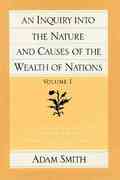Question
Problem 1: Efficiency in the U.S. Beer Industry [6 points] It's pre-Prohibition in the United States, and the country is crawling with people that love
Problem 1: Efficiency in the U.S. Beer Industry [6 points] It's pre-Prohibition in the United States, and the country is crawling with people that love to drink beer. Let the market demand function for beer be Q = 15000 50p, where p is the price of beer. Suppose the U.S. is covered with many small local breweries, all of which have the same production process and are producing identical golden lagers. Thus, the U.S. beer industry is a perfectly competitive market, with each brewer acting as if they can sell or buy as much or as little as they want without affecting the price (i.e they are price takers). Consider a single beer producer Bottom's Up (hereafter BU) who produces a deliciously crisp golden lager. Suppose BU has a minimum variable cost of producing q units of beer represented by V C = 1 2 q 2 . In addition, BU incurs an avoidable fixed cost of F C = 450 to buy stainless steel tanks for converting milled grains into beer through a malting, mashing, fermenting, and filtering process. Thus, BU earns profits (q) = p q 1 2 q 2 450. 1.A. [0.5 points] Assume that BU chooses the amount of beer q to maximize profits. In words (perhaps even a picture), explain what a first order condition is with respect to the profit function and how the first order condition is helpful for finding the amount of beer that maximizes profits for BU. 1.B. [1 point] Find the amount of beer q that maximizes BU's profits. 1.C. [1 point] Suppose that the government limits the number of breweries in the U.S to 100 via a brewing permit program. What is the industry supply curve? And what are the market equilibrium quantity produced Q and price of beer p ? 1.D. [1 point] Plot the inverse supply and demand curves and label the equilibrium quantity and price. Use the graph to calculate the producer and consumer surplus in the U.S. market for beer. 1.E. [1 point] Despite its tastiness, it tuns out that beer has some negative social coststoo much beer can be unhealthy and cause people to act in socially unwanted ways. Suppose that the total social damages are equal to D = 120q. Determine the social optimal level of beer Q that should be produced. 1 1.F. [1 point] Suppose that the government wants to restrict the amount of beer produced to achieve the social optimal level that you found in Part E. The government has decided to do this by reducing the number of brewing permits. How many permits should it issue? 1.G [0.5 points] What are some potential problems with achieving the social optimal amount of beer Q by reducing the number of permits? What are some other ways that the government can achieve Q? Problem 2: Electric Vehicles and Discounting [4 points] Consider the choice of buying one of two cars: an electric vehicle (EV), which costs $50,000, and a plug-in hybrid electric vehicle (PHEV), which costs $40,000. Suppose you expect to own the vehicle for 5 years and that you will save $600 per year in gasoline expenditures if you buy the EV. Further suppose that the annual real interest rate for a savings account is r = 3%. Ignore any depreciation of the vehicles for the entirety of this question. 2.A. [1 point] Which vehicle provides a better return on investment? By how much? 2.B. [1.5 points] How many years will it take for the two investments to be equal? Hint: use the formula for a geometric series: PT t=1 abt = ab(1 b T )/(1 b). 2.C. [1.5 points] Now suppose that you expect gasoline savings to increase at an annual rate of x = 50%. Would this rate justify buying an EV?
Step by Step Solution
There are 3 Steps involved in it
Step: 1

Get Instant Access to Expert-Tailored Solutions
See step-by-step solutions with expert insights and AI powered tools for academic success
Step: 2

Step: 3

Ace Your Homework with AI
Get the answers you need in no time with our AI-driven, step-by-step assistance
Get Started


